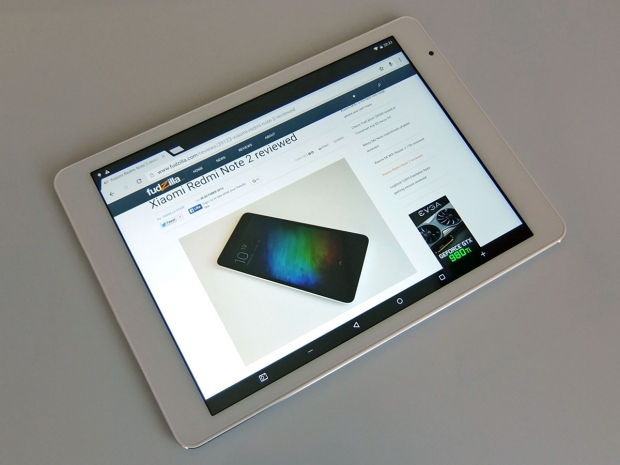Index
OS, UI and Everyday Use
We already pointed out that we received a pre-production sample with Windows 10 and Android 5.1.
In addition to being our first Cherry Trail tablet, this is also the first tablet we had a chance to test with Windows 10 out-of-the-box. We won’t spend too much time on Redmond’s new OS, but we will note that the user experience is somewhat better than on Windows 8.1 tablets. Quite a few issues have been addressed and Windows 10 appears to handle 2048x1536 displays much better than its predecessors. There is still room for improvement, and if you need to run legacy Windows applications on a small, high-res display, you will run into a few problems.
Performance is not an issue, unless you want to run benchmarks of Windows games. The user interface is smooth as silk in both operating systems, and there’s really not much to complain about. Windows 10 does take up quite a bit of room, so we ended up with about 29GB of free storage. The Android partition is 20GB in total, and the amount of available space depends on what you do with the preinstalled apps. That’s not bad, and you can add more storage using the microSD slot (which can handle fast UHS cards, too). The eMMC drive is relatively fast, and thanks to the 4GB of RAM, the X98 Pro is a good multitasker. The micro HDMI port at the bottom is a welcome addition as well.

In most respects, you simply forget this is a cheap tablet, because it punches above its weight in most everyday usage scenarios.
Switching between Windows and Android isn’t as straightforward as on some dual-boot devices we had a chance to test, and the boot menu is ugly. This doesn’t have an impact of performance, but it just goes to show that the device needs a bit more polish. We also don’t like the stock Teclast launcher, or the fact that it’s not easily replaceable.
While we did list a few glaring issues, such as the lack of an ambient light sensor and aggressive throttling in Windows, in everyday use the tablet performed quite well. Sure, these annoyances are hard to overlook, but at least you get good everyday performance. Throttling in Windows is a problem only if you run a lot of GPU-bound applications or benchmarks, but it doesn’t affect user experience while browsing or using basic productivity applications. Performance is better in Android, because there’s not nearly as much throttling to deal with. The launcher is smooth, but we just don’t like the layout, or the dozen or so bloatware apps (luckily almost all can be uninstalled in seconds).
Battery life should not be an issue, provided you don’t push it too hard. The 8000mAh battery is sufficient for about 5-6 hours of content consumption in Android (browsing, occasional video), but it really depends on the brightness, which isn’t controlled automatically. We expected more.
Although we are dealing with a new 14nm processor, don’t get too carried away – the display needs a lot of juice. Also, the powerful processor can consume just as much power under load as Bay Trail (although it will deliver superior performance). Here’s the problem: Cherry Trail can deliver superior sustained GPU performance due to its superior manufacturing process and additional EUs, but this means that under load it can consume more power than Bay Trail, because the latter would be forced to throttle sooner.




